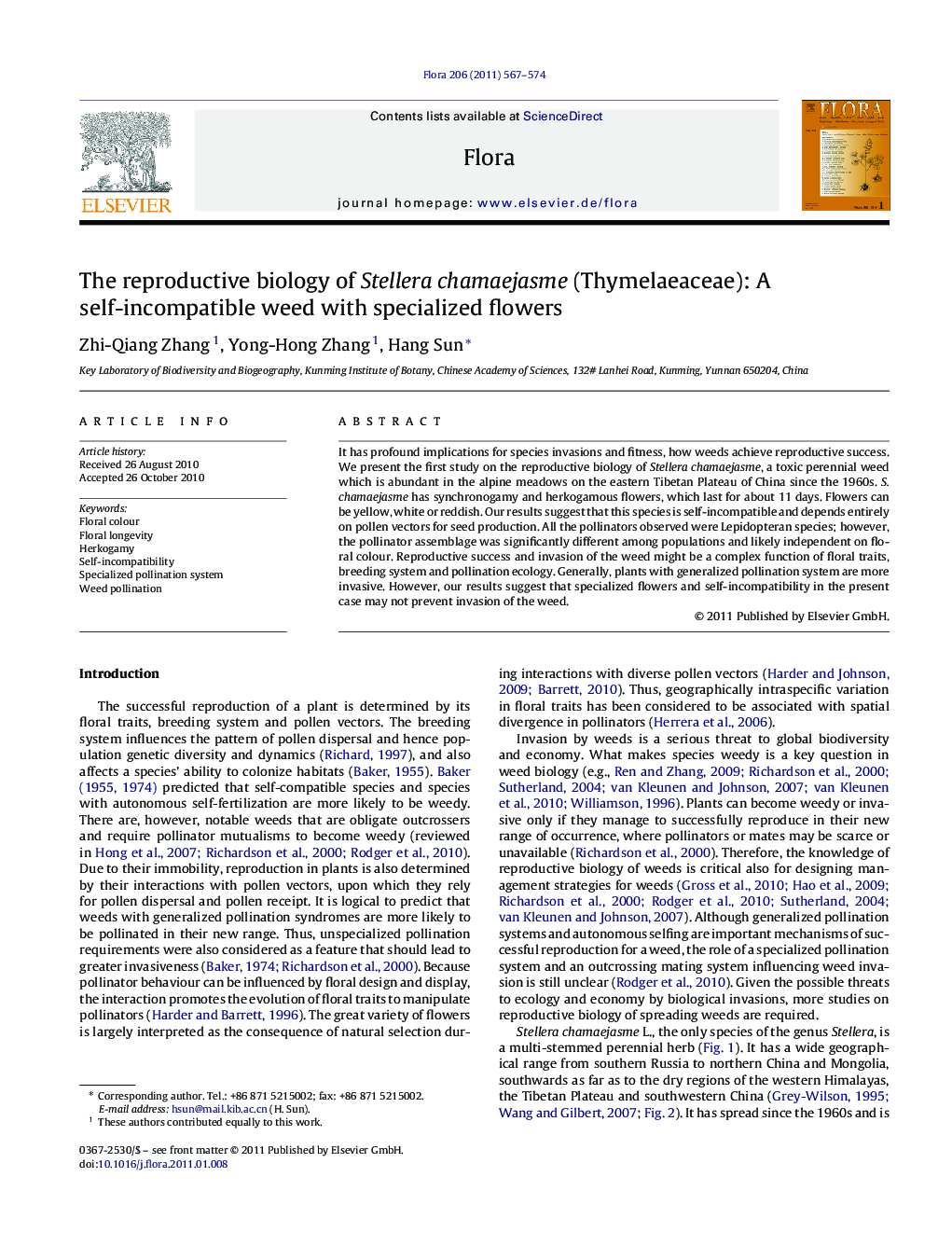| Article ID | Journal | Published Year | Pages | File Type |
|---|---|---|---|---|
| 2179752 | Flora - Morphology, Distribution, Functional Ecology of Plants | 2011 | 8 Pages |
It has profound implications for species invasions and fitness, how weeds achieve reproductive success. We present the first study on the reproductive biology of Stellera chamaejasme, a toxic perennial weed which is abundant in the alpine meadows on the eastern Tibetan Plateau of China since the 1960s. S. chamaejasme has synchronogamy and herkogamous flowers, which last for about 11 days. Flowers can be yellow, white or reddish. Our results suggest that this species is self-incompatible and depends entirely on pollen vectors for seed production. All the pollinators observed were Lepidopteran species; however, the pollinator assemblage was significantly different among populations and likely independent on floral colour. Reproductive success and invasion of the weed might be a complex function of floral traits, breeding system and pollination ecology. Generally, plants with generalized pollination system are more invasive. However, our results suggest that specialized flowers and self-incompatibility in the present case may not prevent invasion of the weed.
